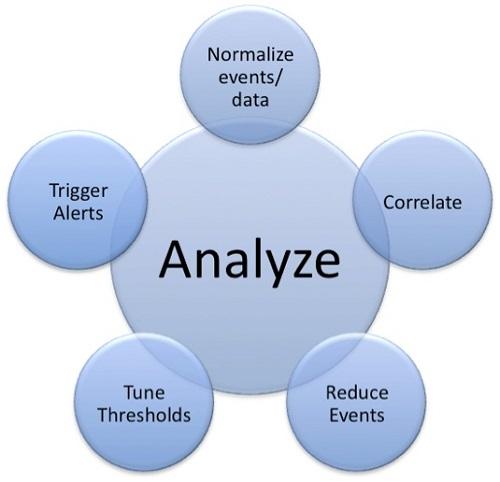In the ever-evolving landscape of real estate investment, the importance of a well-structured rental portfolio cannot be overstated. The journey from a single property owner to a seasoned investor navigating a diverse collection of rental units is both intricate and rewarding. In this article, we delve into a series of compelling case studies that illuminate the strategies, challenges, and triumphs experienced by individuals and firms in the rental market. By analyzing various approaches to property acquisition, management, and tenant relations, we aim to provide a holistic understanding of what it takes to build and sustain a robust rental portfolio. Whether you are an aspiring landlord or a seasoned investor seeking fresh insights, these case studies offer valuable lessons and inspiration to elevate your real estate endeavors.Join us as we explore the stories behind the numbers and uncover the narratives that shape successful rental investments.
Exploring Successful Strategies in Diverse Rental Markets
Understanding the dynamics of various rental markets is crucial for maximizing investment potential. Each market comes with its own set of challenges and opportunities, making a tailored approach essential. **Successful strategies** often involve in-depth market analysis, flexibility, and a keen eye for local trends. Here are some key approaches that have yielded positive outcomes:
- Targeting Niche Audiences: focus on specific demographics such as students, young professionals, or retirees.
- Leveraging Technology: Utilize property management software for efficient operations and better tenant engagement.
- enhancing Property Appeal: Implement basic renovations or staging to attract higher-quality tenants.
- Community Engagement: Foster relationships with local businesses to create a sense of community and attract tenants.
Effective property management also plays a pivotal role in sustaining tenant satisfaction and retention. Employing **data-driven decisions** can help landlords and property owners optimize their portfolios based on real-time analytics. Consider the following factors that contribute considerably to success:
| Factor | Importance |
|---|---|
| Rent Pricing Strategy | Ensures competitiveness and maximizes income |
| Maintenance Response Times | Impacts tenant satisfaction and retention rates |
| Marketing Channels | Increases visibility and occupancy rates |
| Lease Terms Flexibility | Attracts a broader range of tenants |

analyzing Financial Performance Through Real-Life Examples
Examining the financial performance of a rental portfolio involves diving into tangible case studies that illustrate the dynamics of property management. one compelling example is a mixed-use property in downtown Atlanta, were the owner observed a **30% increase** in rental income after renovating both residential units and the commercial space below. This investment strategy not only elevated the aesthetic appeal of the building but also attracted higher-paying tenants and reduced vacancy rates, thus maximizing cash flow. Key factors to consider in this scenario include:
- Target Market: Understanding the demographic of the area.
- Renovation ROI: Evaluating which upgrades yield the best returns.
- Marketing effectiveness: Assessing the impact of effective advertising on tenant acquisition.
Another instructive case involves a suburban apartment complex that adapted its business model in response to shifting market demands. By transitioning to short-term rentals through platforms like Airbnb, the owner capitalized on the tourist influx, resulting in a **45% increase** in revenue compared to customary leasing. To sustain this model, careful consideration was given to pricing strategies, occupancy rates, and customer satisfaction ratings. Here’s how the financial figures broke down:
| Metric | Traditional Lease | Short-Term Rental |
|---|---|---|
| Average Monthly Income | $2,000 | $2,900 |
| Occupancy Rate | 85% | 95% |
| tenant Turnover | 12% annually | 20% monthly |

Navigating Challenges and Maximizing ROI in property management
Effective property management requires a strategic approach to overcoming obstacles while ensuring optimal returns on investment.In examining various rental portfolios, it becomes evident that proactively addressing issues such as tenant turnover, maintenance costs, and market fluctuations can significantly enhance profitability. As an example, portfolios that implemented **tenant retention programs** saw a reduction in vacancy rates by up to **20%**, leading to a more stable income stream.Additionally,portfolios that partnered with reliable contractors for maintenance reported a **15% decrease** in unexpected repair expenses,boosting their overall ROI.
Furthermore, leveraging technology can streamline property management processes, making it easier to track performance metrics and evaluate investment opportunities. **Key practices include**:
- Using property management software for real-time reporting
- Utilizing data analytics to inform pricing strategies
- Engaging in digital marketing to attract potential tenants
| Challenge | Solution | Result |
|---|---|---|
| High tenant turnover | Implement retention programs | Reduced vacancies by 20% |
| Unexpected maintenance costs | Partner with reliable contractors | 15% decrease in repairs |
| Market fluctuations | Data-driven pricing strategies | Improved revenue stability |

Innovative Approaches for Enhancing Tenant Satisfaction and Retention
Enhancing tenant satisfaction requires an innovative lens that focuses on personalized experiences and community engagement. One approach some property managers have found effective is establishing a mobile app that allows tenants to communicate directly with management.This platform can feature **real-time maintenance requests**, update alerts, and even community-driven event calendars, ensuring everyone feels connected. Furthermore, implementing **tenant feedback surveys** post-maintenance or after community events can provide valuable insights, enabling managers to tailor services based on resident preferences and needs.
Another successful strategy involves creating engaging community spaces within rental properties. As a notable example, a communal garden or rooftop lounge can serve as a social hub, fostering relationships among tenants. Additionally, organizing **monthly activities**, such as movie nights or wellness workshops, encourages participation and strengthens community ties. Below is an example of how these community initiatives can enhance overall tenant satisfaction:
| activity Type | Frequency | Tenant Engagement Results |
|---|---|---|
| Movie night | Monthly | 75% participation |
| Wellness Workshop | Quarterly | 60% participation |
| Community BBQ | Bi-Annual | 80% participation |
The Way Forward
the journey through our rental portfolio case studies has illuminated the diverse strategies and innovative approaches that can turn properties into thriving investments. Each case presents unique challenges and successes, offering valuable lessons for both seasoned investors and those just starting out in the rental market. As you consider your own investment path, remember that there is no one-size-fits-all solution. Embrace the insights shared, adapt them to your circumstances, and—most importantly—keep learning.The landscape of rental properties is ever-evolving, and with the right knowledge and strategies, your portfolio can reflect not just your ambitions, but also the changing tides of the market. Thank you for joining us on this exploration; may your journey in real estate be rewarding and inspiring.

